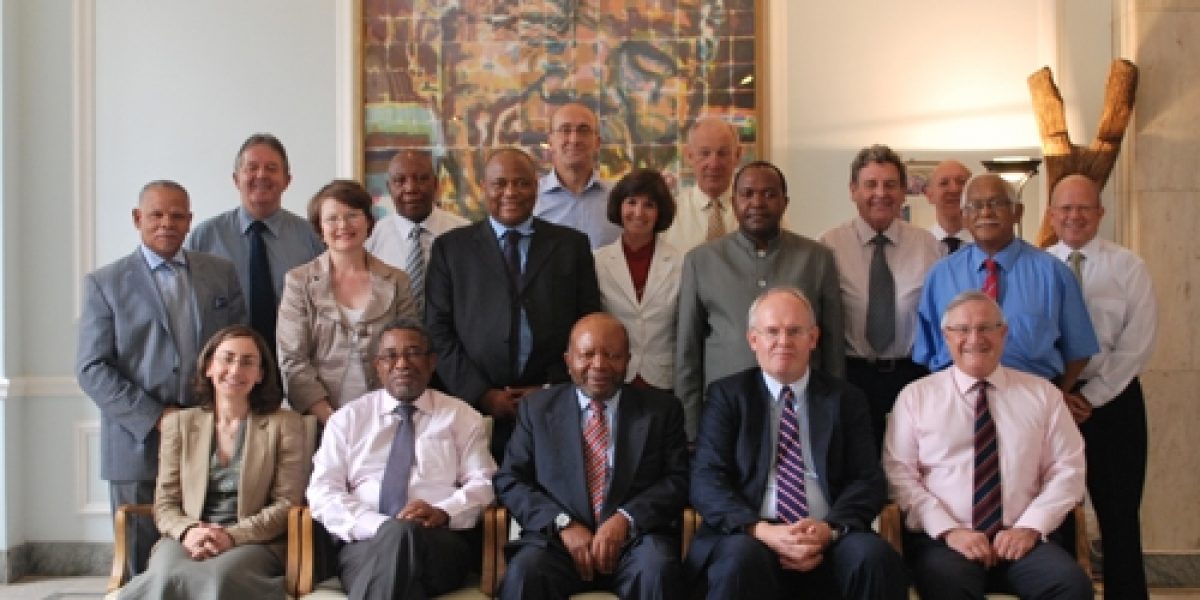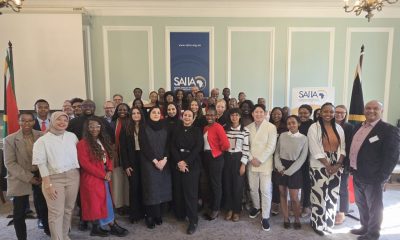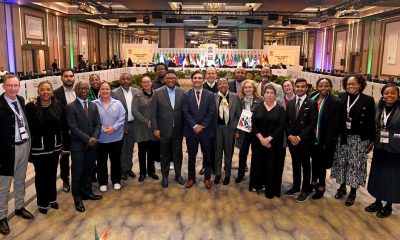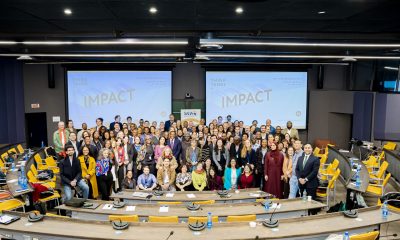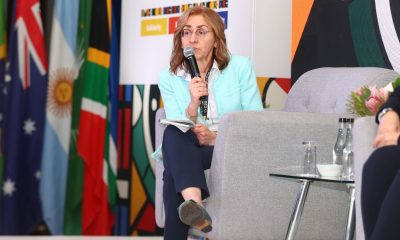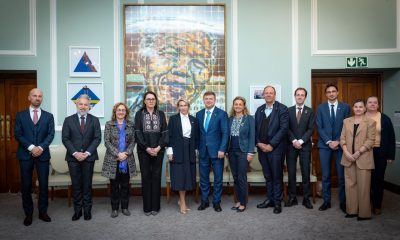When we met eleven months ago, the northern rim of the African continent was entering a period of instability and change, dubbed the Arab Spring. While there is always the inclination encouraged by the media to see these developments as short-term events, the reality has proved once again that they formed part of processes of change that have still not run their full course. In fact, instability spread beyond Africa into the rest of the Arab world and we are still living through the profound, dramatic and disturbing developments in those countries.
Although all is not by any means settled in countries like Egypt and Libya, our main focus of attention recently has been on the unfolding tragedy of Syria. South Africa’s deputy minister of international relations and co-operation told an audience here at SAIIA last year that after what had happened following the adoption of Resolution 1973 on Libya in the UN Security Council in March 2011, South Africa would not support any resolution on Syria that might result in similar action aimed at Regime Change. To the government’s credit, however, it did indeed vote in favour of the Arab-sponsored and Western-supported resolution at the beginning of February this year. This called for President Bashir al-Assad to hand over power to his deputy and to leave office, but also critically, for a Syrian led political transition to a democratic plural political system.
The Libyan and Syrian cases point to the difficulty facing policy makers when it comes to implementing the doctrine of ‘responsibility to protect’ (also known as R2P). How does one avoid it becoming regime change and take action that is not considered biased in favour of one side? As Libya showed retaining objectivity is extremely difficult where you have a disproportionate balance of power, i.e., Gaddafi’s troops or indeed al-Assad’s against a civilian population.
The fluidity of the international environment has brought to the fore competing visions of a global order. The West’s liberal internationalism (characterised by doctrines such as R2P) compete with the objections of countries such as China, India, Russia and South Africa that see the execution of R2P as resulting in neo-imperialist hegemony and an insidious erosion of sovereignty.
Confirming yet again that states (and sovereignty) have not yet reached their sell-by date, as some post-modernists may argue, in July 2011 South Sudan became the first new African state with borders not dating from the colonial era. Provided for in the Comprehensive Peace Agreement signed in 2005 between Khartoum and the Sudan People’s Liberation Army, independent South Sudan emerged following a referendum in which its people overwhelmingly supported this course.
Like the Arab Spring, the birth of the new state has not been without serious internal problems and confrontation with its northern neighbour, the Republic of Sudan, from which it seceded. The diversity of ethnic differences and languages within the new country represent an on-going challenge that was earlier disguised by the struggle for independence.
Relations with Sudan have been complicated by the fact that the main source of export income of the erstwhile state, namely oil, now fall within South Sudan, while the pipeline from the wells to Port Sudan cross Sudanese territory. These problems are unlikely to be solved in the short term and will lead to ongoing political instability in both Sudanese states. The tensions between the two countries have also drawn in their partners, most notably in this case, China, which may face increasing pressure from its domestic constituency to provide greater security for its citizens in politically unstable countries. What does this mean for its principle of non-interference in the internal affairs of states? While not crossing the line to military intervention, China is recognising the challenges of having to protect its many interests across the globe that may require a dilution of its professed respect for other states’ sovereignty.
South Africa has played an extremely constructive role in the process leading up to the independence of South Sudan, both in steering the negotiating process, but equally in contributing to capacity building in the nascent state.
How South Africa engages other African countries and continental institutions remains a core challenge of its foreign policy in the second decade of the 21st century. The recent experience at the AU Summit when Nkosazana Dlamini-Zuma stood unsuccessfully as South Africa’s candidate for the position of chairman of the AU Commission will give South Africa cause for reflection. It will have to consider carefully both its image among fellow African states and how to ensure that relations with pivotal states on the continent improve. Now that SADC leaders meeting in Cape Town have called for Dlamini-Zuma to stand again for the elections scheduled for the June AU summit in Malawi, South Africa will have to ensure that its campaign is attuned to the thinking and views of other states on the continent as it lobbies for support beyond the SADC region.
The publication of DIRCO’s white paper on foreign policy in 2011 sought to set out South Africa’s priorities in the international realm, constructing a new term ‘ubuntu diplomacy’ to characterise its engagement. While it was criticised as a wish list rather than a plan of action to achieve those objectives, it noted that South Africa would have to be cognisant of a number of potential rivals on the continent to its economic and political pre-eminence. What South Africa does at home to improve its competitiveness and reduce its glaring socio-economic inequalities, and what priorities it sets itself in terms of alliance building in Africa, and lastly the tools that it employs to advance these, are elements of a necessary strategy for its regional and global engagement in the 2010s.
A significant tool that South Africa may have at its disposal is the soon-to-be-established South African Development Partnership Agency that will be set up during the course of 2012. Not only should this provide more transparency to government and taxpayers about the ‘what’ and the ‘how’ of the country’s development assistance, it can also be moulded into an effective tool of soft power and influence.
On the wider global stage major developments precipitated by the financial crisis of 2008 and the ensuing sovereign debt crisis in Europe, have challenged the commonly received wisdom that the future of the world will be defined by liberal capitalism, even if such statements may be a little premature. Compared with the ‘flailing’ West, China’s state capitalism model of development is increasingly looking like a ‘market leader’. Its attributes are attracting many adherents in emerging markets such as Brazil, India and South Africa. Nevertheless, state capitalism has its own weaknesses, which states seeking to emulate it must be aware of. These include the case of uncompetitive firms retaining advantage because of government backing, the related inefficient allocation of state capital, and the need for a competent state. What this trend might mean for Africa’s development trajectory remains to be seen. The South African government’s commitment to a developmental state and the lack of policy certainty on issues ranging from nationalising of the mines and the land on the one hand and the recognition of the importance of foreign and local private sector-led investment, has yet to play itself out.
However, if there is one lesson to draw from what Time magazine characterised as the Year of the Protestor in 2011, it is that seemingly disparate protests in Europe, the Middle East and elsewhere in the world signal a growing discontent and disconnect between states, political elites and society in general. In his new book ‘America and the crisis of global power’, Zbigniew Brzezinski refers to ‘the accelerated surfacing of the restless phenomenon of global political awakening’. Occurring at the same time as the shift in the centre of gravity from West to East, this global political awakening of citizens (enhanced by the use of social media), and how states respond to it, may well chart the trajectory of peace, stability and global cooperation at a time when our planet needs it the most.
I am very pleased that SAIIA is playing such an important role as a thought leader on many of these issues and in contributing at various levels to the national and international debate. SAIIA remains an important and trusted source of information and commentary by government representatives both in Africa and beyond.
A particularly valuable part is being played by our very active Youth Development programme. With its Model UN and Environmental Sustainability projects in Gauteng, KwaZulu-Natal and the Western Cape, SAIIA is helping to create an informed and articulate new generation and building capacity to carry forward South Africa as an important global player now and in the future.
Finally, I am delighted that for third year in succession SAIIA was adjudged as the top think-tank in Sub-Saharan Africa in the University of Pennsylvania global survey conducted among peers and other stakeholders. What is doubly gratifying is that SAIIA was ranked in the top cohort in no less than five sub-categories, including the ‘greatest impact on public policy’.
In spite of constraints imposed by global economic circumstance, SAIIA continues to go from strength to strength. Long may it be so!

